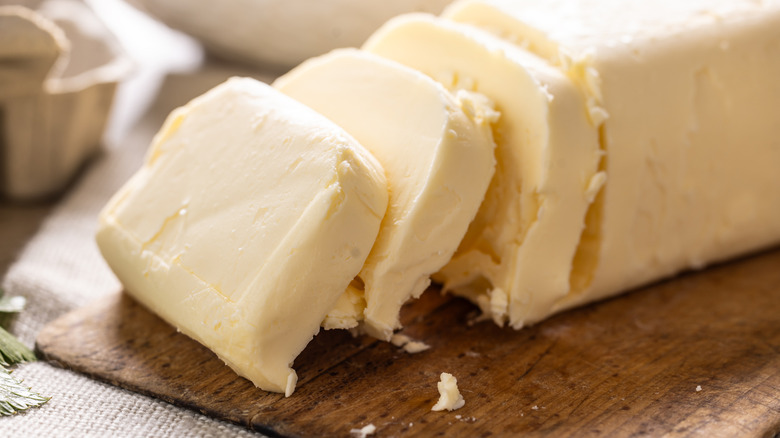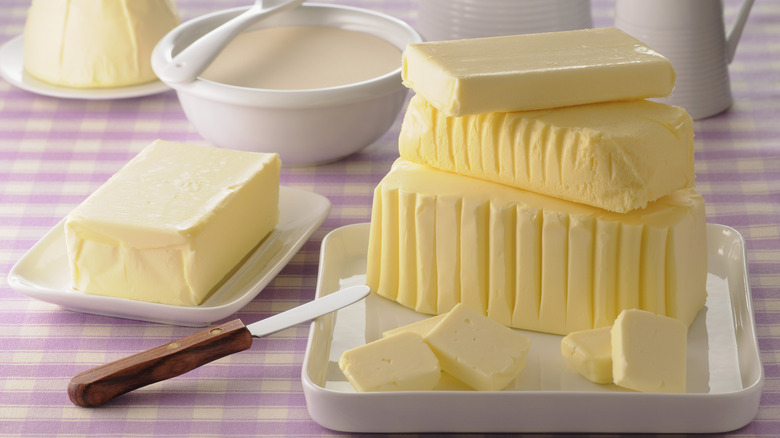Is There A Difference Between Sweet Cream And Regular Butter?
Butter has a lot of substitutes — margarine, shortening, ghee, and even sometimes coconut oil — but there's a reason it's still the fat of choice for making so many luxuriant dishes. From adding glossy finishing touches to layering between dough for delicately-layered croissants, to browning butter's milk solids to add depth to any number of dishes, there's nothing quite like the taste of butter. While most of the time the only criteria we use when buying it is whether the stuff is salted or unsalted, there are a few more options for true butter lovers to dive into. There are differences in how a certain type of butter is made, which is where sweet cream butter comes in.
While it sounds like a delicious ingredient for desserts and baked confectionary, sweet cream butter is more humble than one may expect. The difference simply comes down to the cream that's used to make it. While some butter is made from cultured or soured cream, which imparts a slightly tangy flavor, sweet cream butter uses fresh cream. It also happens to be the most common butter you'll find in the States.
Sweet cream butter is made from fresh cream
Most of the butter at the supermarket is actually sweet cream butter even though it might not say that on the label. It doesn't contain sugar or any other sweetener and can come in salted and unsalted varieties. Sweet cream butter is made from fresh pasteurized heavy cream and has a lighter taste than butter that you'll commonly find in Europe, which is generally made from cultured cream. This gives the latter a slight tinge of sourness akin to yogurt. The flavor of European butter depends on how the cream is fermented before it becomes butter. The Icelandic eatery, Moss, which is famous for its butter, mixes cream with a local type of fermented yogurt called skyr, giving its in-house specialty butter unique flavor and fluffy texture.
Because of the added step of fermenting the cream, cultured butter is less common. Sweet cream butter, ubiquitous stateside, is sometimes called American butter. It also tends to have a slightly lower fat content than cultured or European butter. Both American and European butter categories are broad, with a wide spectrum of flavors in each. How salted or unsalted the butter is has the most immediate effect on how it tastes. However, the extra creaminess of cultured butter does make baked goods taste slightly richer. And if you're spreading it or using it on a charcuterie board, ensuring the butter is at the right room temperature and softening it with a rolling pin can give it a richer mouthfeel.

